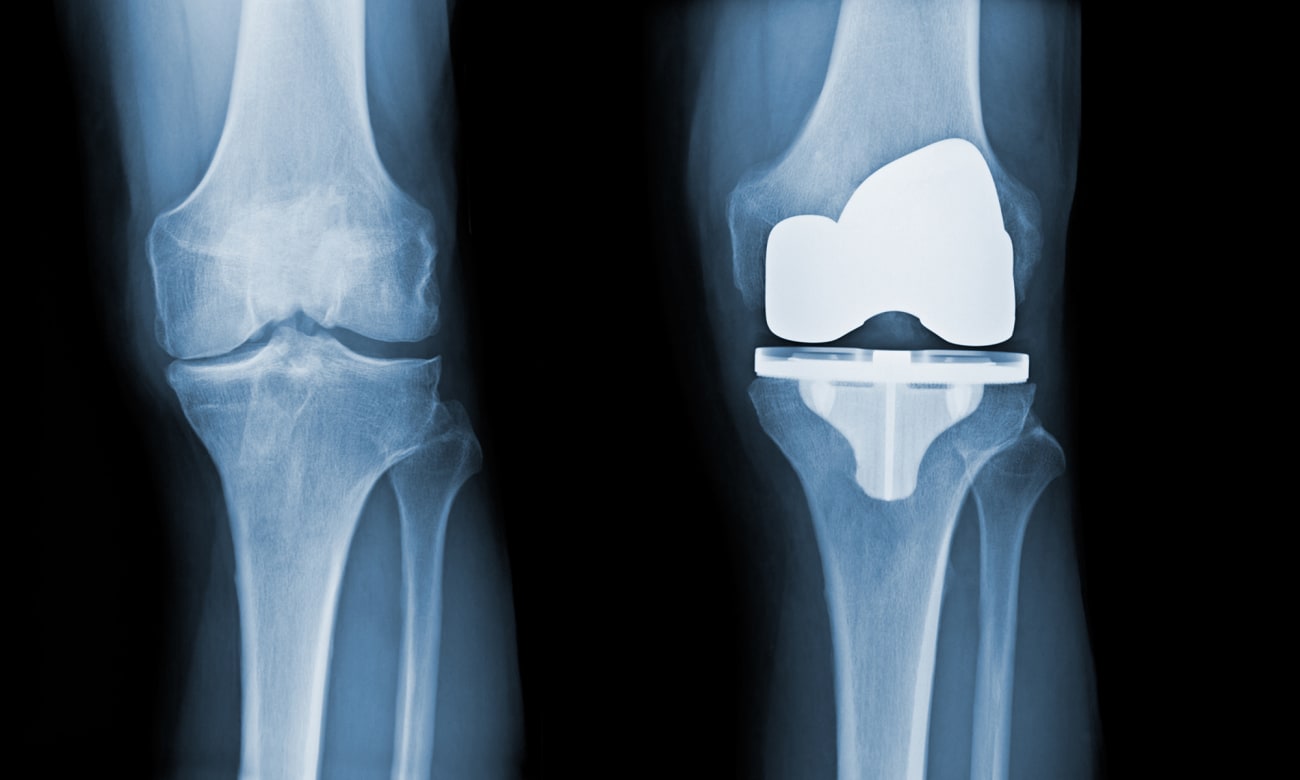
Research by Johns Hopkins orthopaedic surgeon Savyasachi Thakkar suggests opportunities for safety and outcome improvements based on timing of multiple procedures.
Despite the high success rates of the most common total joint replacements — those on the knee and hip — 2% to 5% of patients have complications from these procedures, says Johns Hopkins orthopaedic surgeon Savyasachi Thakkar.
Some of these complications, such as heart attacks, strokes, and respiratory issues that necessitate intubation, result from anesthesia given during these procedures; others, including infections, fractures, implant failure or loosening, and unexplained pain that develops during healing, result from the procedure itself.
That’s why much of Thakkar’s research focuses on better understanding of these complications, he says, in an effort to reduce them for patients at Johns Hopkins and beyond.
Ideal Timing for Bilateral Arthroplasties
In 2022, Thakkar and his colleagues published a study in The Journal of Arthroplasty examining complication rates in patients who had bilateral total knee replacements. Although operating on both knees during the same procedure reduces the risks associated with anesthesia, it may present mobility challenges for some patients. So, most patients who need bilateral knee replacements choose to have these bilateral arthroplasties as two separate procedures. However, the ideal timing between the two surgeries to reduce complications has been unknown.
To answer this question, Thakkar and his colleagues examined records acquired from a national insurance database from more than 25,000 patients who had bilateral total knee replacements in 2015 to 2018. Their findings show that having the second procedure at least six weeks after the first significantly reduced complication rates compared to having the second procedure earlier.
Benefits of Genicular Nerve Radiofrequency Ablation Before Total Knee Arthroplasties
Another study, published last year in the Journal of the American Academy of Orthopaedic Surgeons Global Research & Reviews, looked at potential benefits and complication rates for patients who had genicular nerve radiofrequency ablation before their total knee arthroplasties. This procedure, often used to buy time for patients before their joint replacement, ablates the terminal branches of sensory nerves feeding the knee, reducing pain without affecting mobility. The Johns Hopkins researchers found that out of 256,000 patients who had total knee replacement in 2015 to 2017 and whose data was available in a large insurance database, only 675 had genicular nerve ablation beforehand. This fraction of patients had lower odds of requiring a blood transfusion, and other complications such as pain after surgery, says Thakkar.
Pros and Cons of Total Knee Arthroplasty
In a third 2022 study, published in The Knee, Thakkar’s team compared complication rates between patients who had total knee replacements and those who had partial replacements. The findings show that patients who had unicompartmental and bicompartmental arthroplasty were more likely to need revision procedures within the next two years than those who had total knee replacements. However, patients with partial knee replacements were less likely to experience postoperative complications in the 90 days after surgery than those who had total knee arthroplasty.
“These studies give surgeons and patients data to make concrete changes in practice,” Thakkar says. “Being upfront about complications makes us better surgeons and practitioners of the art of medicine to enable the best results for our patients.”
To refer a patient, call 443-997-2663.
Share Fast Facts
Research by orthopaedic surgeon Dr. Savyasachi Thakkar suggests opportunities for safety and outcome improvements in total joint replacement based on timing of multiple procedures. Click to Tweet



